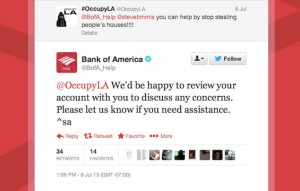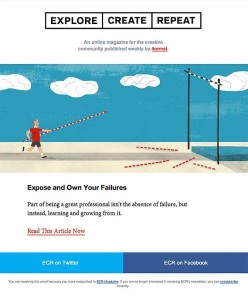— October 12, 2018

RoyalAnwar / Pixabay
If you think the marketing world is trying to pull one over on you today, then you need to pull up some old school ads. Boy oh boy, we were blind to the fact that folks were trying to sell us on some completely horrific products! For starters, there’s the ad that promoted “cocaine toothache drops for kids.” Yup, that is exactly what the ad said. It ran in the 1890s and proposed an instant cure for children for only 15 cents. The medicine not only claimed to relieve pain but also promised to provide a lift in mood. We are not making this up. My second favorite vintage ad is from the 1950s and is for a soft drink that suggests that the sugar water is “so pure and wholesome that you can give it to babies and feel good about it”. Just mix it with their milk and to coax your baby to drink up!
Let Research Help Remove Today’s Leadership Blind Spots
The research that linked sugar-filled carbonated drinks to obesity or even cocaine to drug addiction wasn’t always obvious. But if you take time to reconcile data with reality you can embark on a path of profound belief change. In short, you can overcome a particular blind spot. This has happened over the ages to such absurd beliefs of wholesome carbonated soft drinks mixed with milk, cocaine toothache drops for kids, healthy smoking habits for relaxation, and even blood letting to cure illness. And aren’t we better off now that our blinders have been removed and we can see these products for what they really are?!
Now let’s apply this same theory to the business world … and specifically to leaders. It is without question that it is time to pause and ask, are their areas where our existing leadership beliefs and experiences preclude us from having the most enlightened view on how to lead people? Leadership blind spots are most definitely playing a role in the fact that 60-90 percent of our dreams, aspirations, and strategies are not executed and that 70 percent of the people in our organizations are not actively engaged.
Here’s the kicker. As a society when we put our mind to it, we can create meaningful change. Over the last 25-30 years cancer deaths in the US are down 25%. Traffic fatalities in the US for the same approximate period are down 35% (with recent spikes up in the last two year). So, if we can make headway in certain societal issues, why has the lack of engagement been unchanged for the last 30 years? It isn’t for lack of discussion. Leaders have measured, made speeches, and crafted incentives around improving engagement, but it hasn’t worked. Why? Leadership Blind Spots! Leaders as a whole are not acknowledging things that should in fact be very obvious—not because we don’t care, but we just don’t realize it yet. Just like we didn’t realize sugar-filled soda shouldn’t be the drink of choice for our youngest family members. But I’m not letting this excuse fly any longer. It’s time to make these longstanding blind spots a thing of the past and here are five areas to start focusing on now.
1. PURPOSE—Purpose Matters, but it doesn’t drive our numbers.
People today don’t want to just go through the motions, pay their dues, or work for someone else to just help them get what they want. Joy, meaning, and purpose is a pre-requisite for work and when it is present finically performance sky rockets. It turns out that purpose is a growth strategy.
2. STORY—We have a compelling Story to tell that our people care about.
The word is compelling so phrases like EBITDA, ROIC, and CAGR don’t cut it. What is the adventure that captures what we what to create and build that matters?
3. ENGAGEMENT—Rationale and logical presentations engage the hearts and minds of our people
It is simply not possible for words from a leaders lips to ignite passion in the hearts and minds of their people. Inspiration percolates from thoughtful conversations and not scripted presentations. Conversations where as leaders we believe our people have better answers that we do when we invite them in to co-think the most critic questions facing our future success.
4. TRUST—People will not do the right thing unless you tell them what to do and hold them accountable to do it
The key to extraordinary performance is not to eliminate human variability but to encourage it. Think hardlines (one way no exceptions) and guidelines (clear boundaries and guardrails) and no lines (use your own special judgment and talents) as a way to create a human operating system where people support common standards AND contribute the best they have to offer at the same time.
5. TRUTH—My people feel safe telling me what they really think and feel
They don’t. You have to make it safe. Neuro-research shows the more accomplished you become as a leader a chemical change occurs in your brain that diminishes empathy. It makes it harder and harder to understand what your people think and feel. It’s chemical. The only way to be in touch with the feelings of your people is to create practices of safe truth telling that close that gap of what you as a leader understand about your people, what they care about, and where they think we can take our collective game to the next level.
The Time is Now to Ditch Our Leadership Blind Spots!
Just because the business world has always operated one way doesn’t mean it should keep operating that way. And this is why leaders owe it to their people to eradiate the blind spots that are most certainly holding back their people, their business, and their cumulative success.
For more tactics to help remove today’s most detrimental leadership blind spots, check out my latest book, which I co-authored with Root Inc. President Rich Berens, What Are Your Blind Spots?: Conquering the 5 Misconceptions that Hold Leaders Back, currently available for pre-order via Amazon here.
Co-authored by Rich Berens
Originally published here.
Business & Finance Articles on Business 2 Community
(75)








